What is Drinking Chocolate Powder?: Whether it’s a chilly evening treat, a nostalgic indulgence, or part of a creative dessert recipe, drinking chocolate powder holds a special place in the hearts of chocolate enthusiasts everywhere. But what exactly is drinking chocolate powder, and how does it differ from regular cocoa or hot chocolate mix? If you’ve been curious about this decadent delight, you’re in the right place. This guide dives deep into the origins, ingredients, benefits, and uses of drinking chocolate powder.
From understanding its rich history to tips on preparing a perfectly velvety cup, this article will cover everything you’ve wanted to know about this creamy, indulgent experience.
What is Drinking Chocolate Powder? An Introduction
When we talk about drinking chocolate powder, imagine pure, rich chocolate in powdered form—designed to brew the most luxurious hot beverage. Unlike sugary hot cocoa mixes, which lean heavily on sweeteners and milk powder, drinking chocolate powder is often made with finely grated or ground real chocolate, resulting in a creamier, more decadent drink.
The Origins of Drinking Chocolate Powder
Drinking chocolate dates back centuries, with its roots in ancient Mesoamerican cultures where cacao was believed to have sacred and medicinal properties. Aztec and Mayan civilizations were among the first to enjoy chocolate as a drink, often prepared with spices like chili or vanilla and consumed during rituals. Fast forward to today, drinking chocolate powder has evolved into a global treat, with variations enjoyed in almost every corner of the world.
Why It’s a Beloved Treat Around the World
Drinking chocolate powder is an indulgence that offers something for everyone. For chocolate enthusiasts, it’s a way to explore high-quality chocolate in liquid form. For health-conscious consumers, certain varieties provide less sugary alternatives to hot cocoa, often with richer flavors thanks to their higher cocoa content. For parents, it can be a cozy treat to share with the family while creating lasting memories.
What is Drinking Chocolate Powder? Ingredients Explained
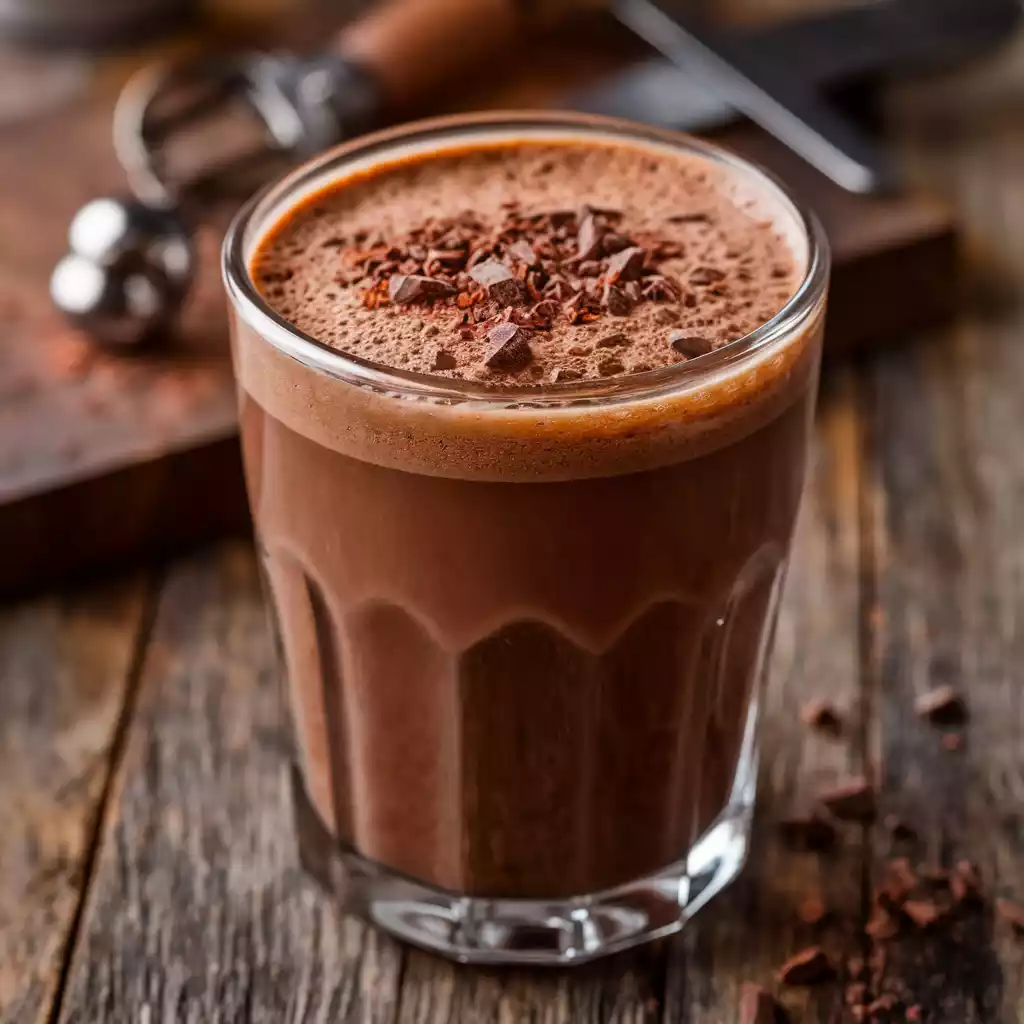
The Key Components of Drinking Chocolate Powder
At its core, drinking chocolate powder includes three essential ingredients:
- Finely Ground Chocolate (often bittersweet, semi-sweet, or unsweetened)
- Sweeteners (optional, depending on the brand or recipe)
- Flavoring Agents (like vanilla or cinnamon)
High-quality drinking chocolate powder may use artisanal chocolate, while some commercial options may include stabilizers or milk powder for added convenience.
How It Differs from Regular Cocoa Powder
While both cocoa powder and drinking chocolate powder come from cacao beans, drinking chocolate powder stands out due to its rich texture and full-bodied flavor. Cocoa powder is a processed product—essentially the defatted, roasted cacao bean that’s been ground into a dry, fine powder. On the other hand, drinking chocolate powder retains more of the cacao’s natural fat content and often includes chocolate solids.
What is Drinking Chocolate Powder? A History of Sweetness
For centuries, chocolate has been revered as more than just a food—it’s a cultural experience.

The Ancient Roots of Chocolate as a Drink
Chocolate as a beverage dates back roughly to 2,000 BCE. The Mayans and Aztecs prepared a frothy cacao-based drink called “xocolatl,” often served cold and spiced with chili or black pepper. Unlike the sweet versions of today, this early chocolate drink was pungent, slightly bitter, and enjoyed for its energizing effects.
How Drinking Chocolate Powder Evolved Over Time
When cacao arrived in Europe in the 1500s, it was introduced to sugar, milk, and cream. This marked the beginning of drinking chocolate as we know it, with European countries like Spain creating rich, velvety versions made for royalty. Over time, as cacao production scaled globally, drinking chocolate powders began to emerge as convenient ways to recreate this luxurious experience at home.
What is Drinking Chocolate Powder? How It’s Made
The Production Process of Drinking Chocolate Powder
Producing drinking chocolate powder begins with grinding high-quality chocolate into a fine, powdery consistency. The process often starts with carefully selected cocoa beans that are roasted and processed into chocolate before being ground into powder form. Depending on the brand and type of product, additional steps may involve blending the powder with sugar, natural flavorings like vanilla, or milk powder to create instant preparation options. Some manufacturers may also add stabilizers or other additives to enhance shelf life and consistency, especially for mass-market products.
Quality Differences in Commercial vs. Artisan Varieties
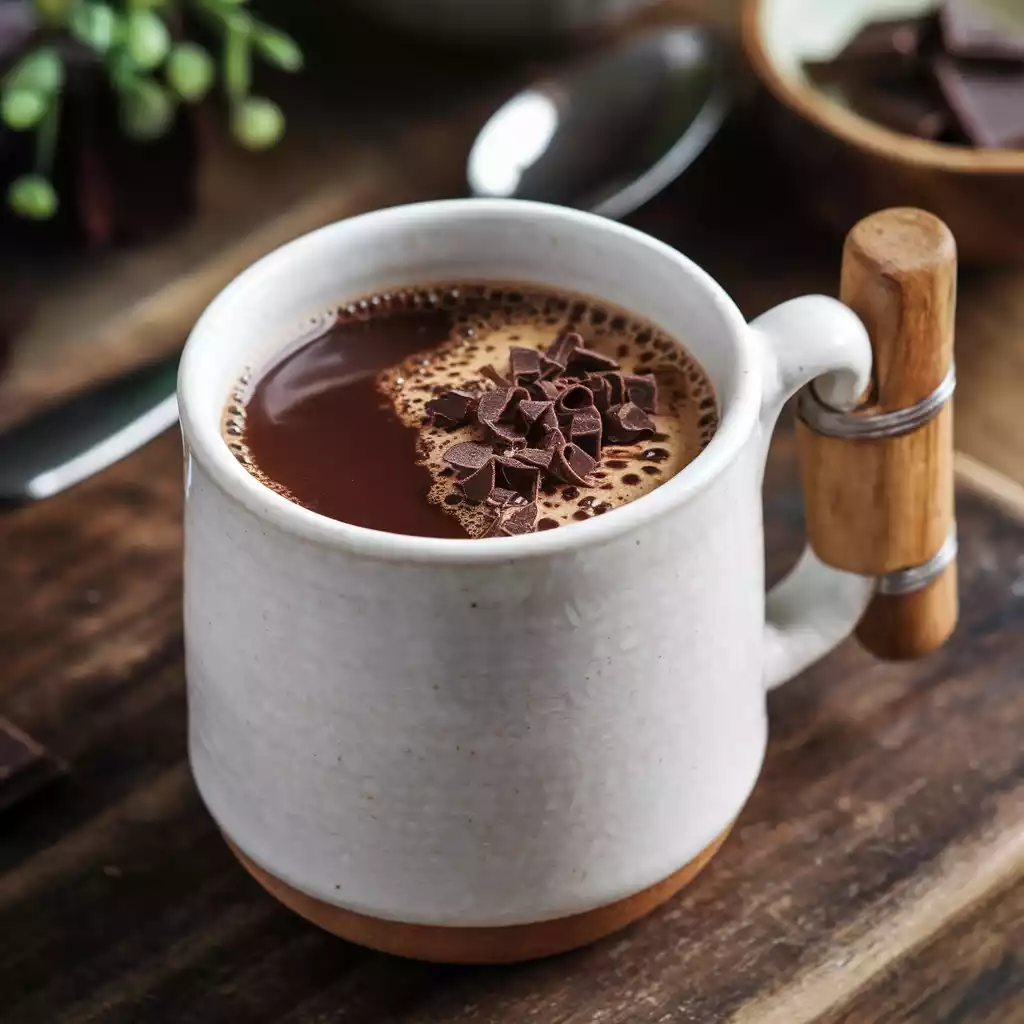
When it comes to quality, there’s a noticeable difference between commercial and artisan drinking chocolate powders. Commercial options are designed to be budget-friendly and convenient, often containing a mix of cocoa powder, sugar, and additives to keep costs low while ensuring a uniform taste. Artisan varieties, on the other hand, prioritize quality over cost. They typically use premium cocoa beans sourced from specific regions, which are minimally processed to retain their natural flavors and aromas. Artisan powders usually have fewer additives, focusing instead on the purity and richness of the chocolate. The result? A more luxurious, full-bodied cup that delivers a true chocolate experience, perfect for those seeking indulgence in every sip.
What is Drinking Chocolate Powder? Nutritional Insights
Is Drinking Chocolate Powder Healthy?
Drinking chocolate powder can be part of a balanced lifestyle when consumed in moderation. Look for powders with higher cocoa percentages, as they are generally lower in sugar and contain antioxidants like flavonoids. Unsweetened varieties paired with natural sweeteners, like honey, are also excellent choices for health-conscious consumers.
Comparing Calories and Nutrients in Popular Brands
Nutritional values for drinking chocolate powder vary widely. While some commercial brands may contain 100–150 calories per serving (including added sugars), artisan options using pure chocolate and little-to-no additives can offer a more wholesome option.
What is Drinking Chocolate Powder? Preparation Tips
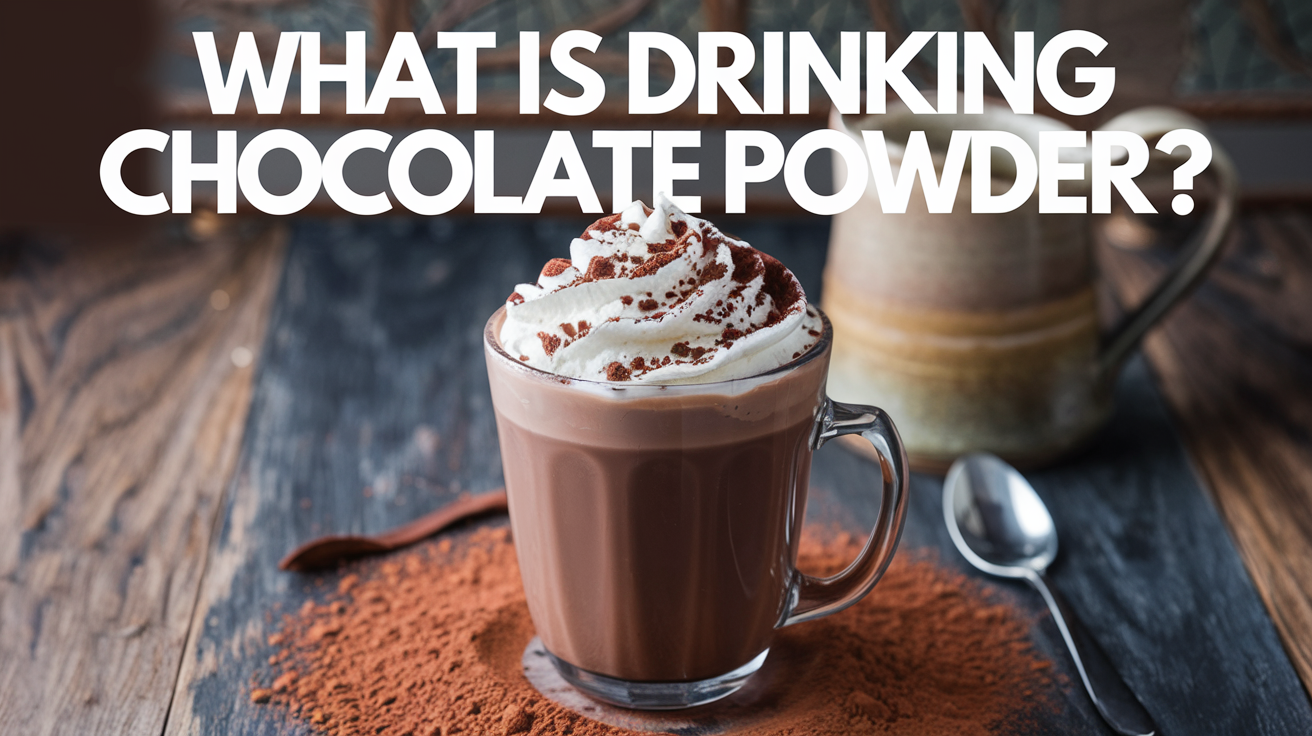
How to Make the Perfect Cup of Drinking Chocolate
- Warm your choice of milk or milk alternative on the stovetop, but don’t boil.
- Add 1–3 tablespoons of drinking chocolate powder (depending on your desired richness).
- Whisk vigorously until the powder is fully dissolved and the mixture is frothy.
- Serve hot and enjoy!
Creative Additions to Enhance Your Chocolate Drink
While a classic hot chocolate is always a win, why not elevate your drink with these fun add-ins:
- Creamy Treats: Top with whipped cream or drizzle with caramel.
- Savory-Sweet Spices like cinnamon or cardamom add warmth and depth.
- Adult Twists: A splash of Baileys or rum for festive occasions.
What is Drinking Chocolate Powder? Popular Uses
Beyond Beverages
Think outside the mug! Drinking chocolate powder can be used to:
- Enhance Baking: From brownies to chocolate cakes.
- Upgrade Breakfast: Stir into oatmeal or pancake batter.
How It Adds Depth to Desserts
Drinking chocolate powder offers an intense, luxurious flavor to ice creams, mousses, and even tart fillings—bringing your dessert game to a whole new level.
What is Drinking Chocolate Powder? Variations Around the Globe
European Drinking Chocolate Powder vs. American Versions
European drinking chocolate typically emphasizes pure chocolate flavors and richness, often resulting in thick and creamy concoctions. American versions, by contrast, tend to favor lighter textures and sweeter profiles.
Unique Twists on Drinking Chocolate Powder Worldwide
- Mexico: Spicy additions like chili powder or cinnamon.
- Italy: The famous cioccolata calda, a thick, pudding-like chocolate drink.
- Philippines: “Tablea” hot chocolate made from locally grown cacao beans.
What is Drinking Chocolate Powder? Choosing the Best
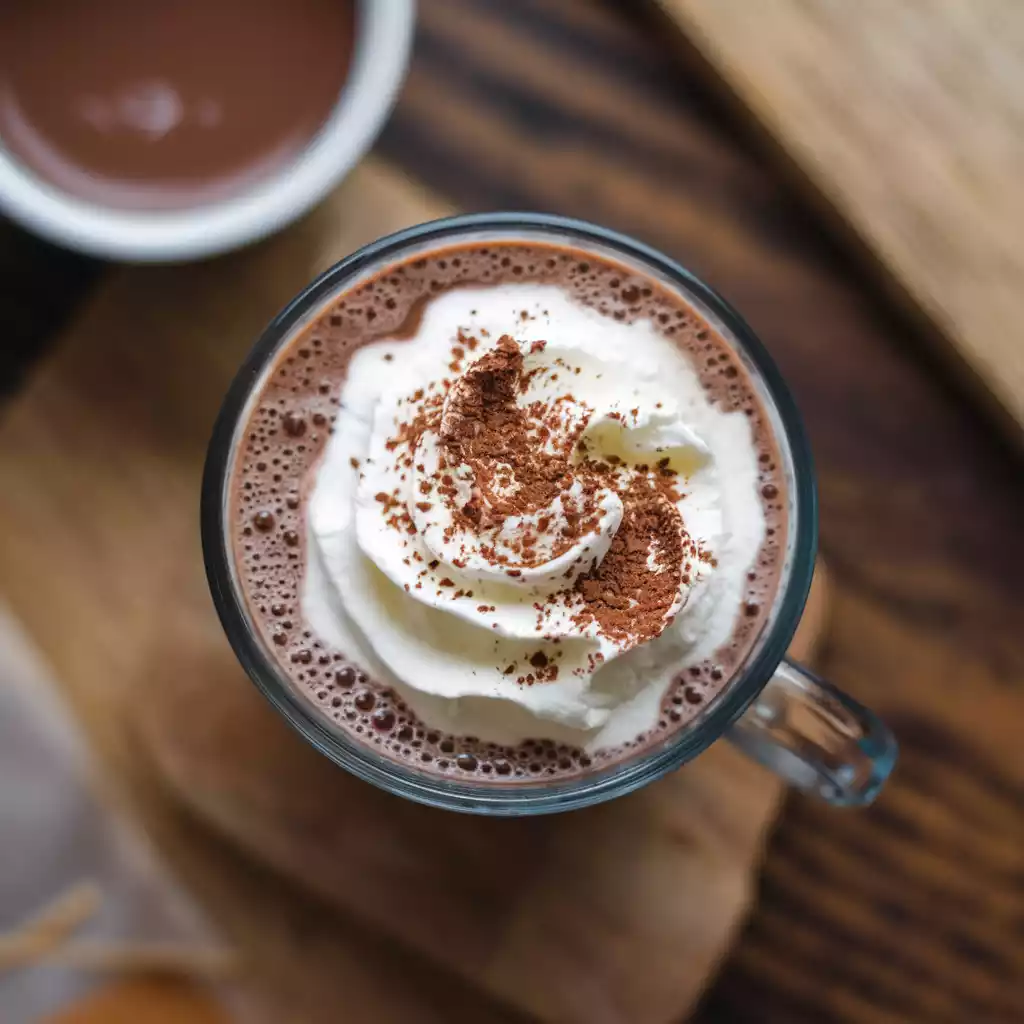
Tips for Selecting High-Quality Drinking Chocolate Powder
- Look for varieties with minimal ingredients (a shorter ingredient list often signals higher quality).
- Prioritize powders with a high percentage of cocoa solids.
What to Look for on Labels and Packaging
Check for certifications like “fair trade” or “organic” to ensure ethical and sustainable sourcing.
What is Drinking Chocolate Powder? Frequently Asked Questions
Is Drinking Chocolate Powder the Same as Hot Chocolate Mix?
No! Hot chocolate mixes often include sugar, artificial flavoring, and milk powder, offering convenience at the expense of rich, authentic chocolate flavors. Drinking chocolate powder, on the other hand, focuses on pure, premium ingredients.
How Long Does Drinking Chocolate Powder Last?
When stored in a cool, dry place, drinking chocolate powder can last up to two years. Be sure to check the packaging for specific expiration dates.
Indulge with Confidence
Whether you’re a health-conscious cacao enthusiast or a parent eager for a new family tradition, drinking chocolate powder is a versatile treat with a long, storied history. Take your time exploring artisan varieties, experimenting with preparations, and discovering how this thick, luscious chocolate drink can bring warmth and joy to your days.
Pinterest: What is Drinking Chocolate Powder?
Post Disclaimer
The information contained in this post is for general information purposes only. The information is provided by Choco Fever Dream and while we endeavour to keep the information up to date and correct, we make no representations or warranties of any kind, express or implied, about the completeness, accuracy, reliability, suitability or availability with respect to the website or the information, products, services, or related graphics contained on the post for any purpose.

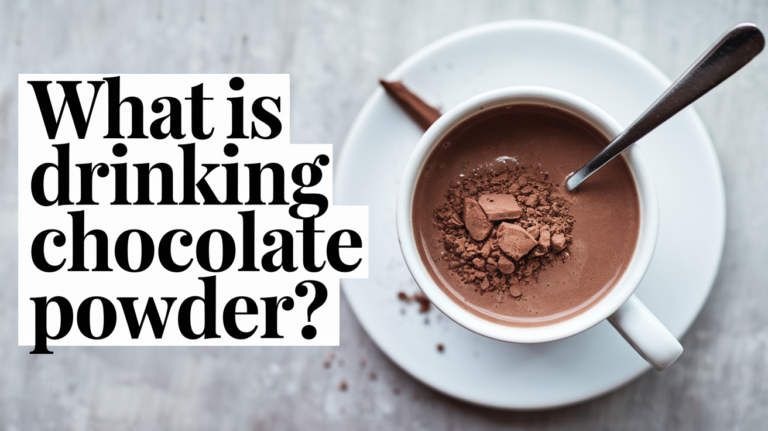
5 thoughts on “What is Drinking Chocolate Powder? The Ultimate Guide You Need to Know!”